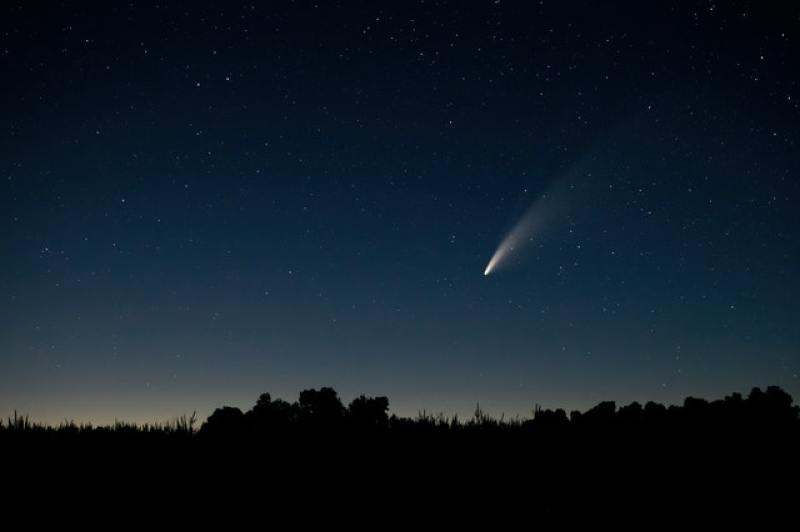
Astronomers say that a once in a lifetime event is occurring on Thursday night right before Christmas, when Comet Leonard or Comet C/2021 A1 will closely approach Venus after passing the Earth. Those who will look up at the low areas of southwestern sky just around sunset on Thursday just might see it passing by.
CBN News reported that Comet Leonard will come so close to Venus on Thursday night that Gregory Leonard, a senior research specialist at the University of Arizona Lunar and Planetary Laboratory, who discovered the comet and for whom the comet was named, explained that "There is a small chance Venus will pass close enough to the comet's path where it may pick up some dust grains in its atmosphere, producing a meteor shower on our neighboring planet."
Leonard had just discovered Comet C/2021 A1 last January while searching for near-Earth asteroids in the night sky. He explained that the tail of the comet was a dead giveaway. He added that another incredible feature of Comet C/2021 A1 was its fast moving speed of up to 43 miles per second. Because of this speed, the comet's position will change every day when observers look at it from Earth.
Leonard explained to A News that people should observe the comet to witness an effect called forward scattering, in which the comet comes close to the sun, causing the comet's tail and "coma" or cloud of dust and gas to scatter the sunlight from behind, creating an enhanced brightness like no other.
"I feel there is going to be something to be seen even for the casual observer," Leonard remarked. "Find yourself a dark sky with a good view of the horizon, bring binoculars and I think you may be rewarded."
Astronomers believe that this is not Comet C/2021 A1's first journey around the Earth's celestial neighborhood. They believe that Comet Leonard has been through the solar system some 80,000 years ago, during which it encountered the sun for the first time before speeding away back into the depths of space. Astronomers claimed it took 40,000 years for the comet to return. But astronomers including Leonard warned that it won't be back, so people should make sure to take a good hard look on Thursday night.
Star Walk reported that the comet will move into the southern celestial hemisphere during the latter part of December and on Christmas day itself, the comet will be visible from the Southern Hemisphere in the constellation Microscopium.
The Institution of Creation Research (ICR) reported that the Apostle Jude may have been witnessing comets when he wrote in his brief epistle in the Bible's New Testament about "wandering stars." The coming "Christmas star" or "Christmas comet" comes a year following the remarkable celestial phenomenon that was believed to be the "Star of Bethlehem."
Those who want to see this once in a lifetime (and more) event should make sure to watch out for the skies on Thursday night to witness the once in a lifetime, possibly biblical "Christmas star" pass by the Earth.


















